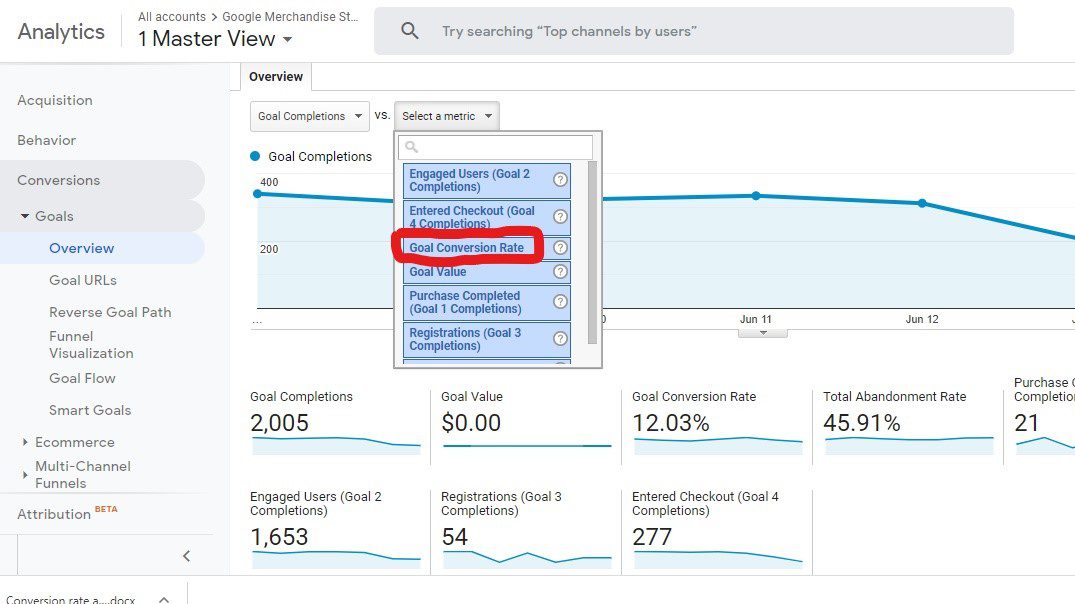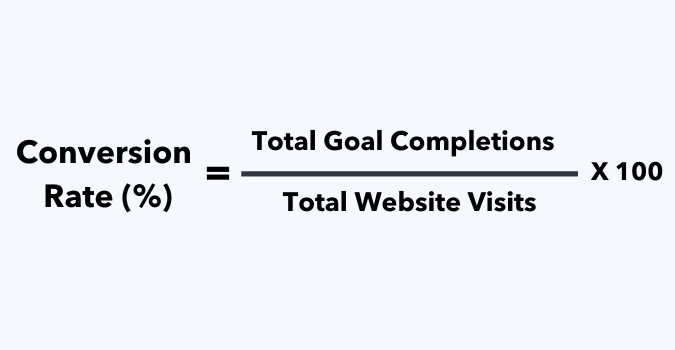Conversion Rate as a Measure of the Effectiveness of Your Website

Using the conversion rate as a measure of a site’s effectiveness helps set the tone for everything you do right from the start and set your website up for success.
Tons of traffic inflow to a website makes everything look okay until you discover later on that sales aren’t increasing or email opt-ins aren’t looking as good as you had expected. I mean, you have a ton of traffic. It isn’t as simple as that. There is an important piece that you need to consider, the conversion rate.
An eCommerce store, for example, that generates traffic from PPC might have been spending $1000 to drive traffic of 5000 visitors monthly with only 1% of that translating into sales. Yes! You are probably getting returns on your ad spend to get traffic to your landing page.
But if you pay more attention to the average conversion rate rather than basking in tons of traffic, you could cut back your ad spend by half while still getting the same value. The same goes for optimizing form fields or facebook ads, pop up performance,
Here is a quick rundown of 3 things that makes rates the appropriate yardstick to measure your website’s conversion rate effectiveness:
- Conversion rate reveals the true ROI of your website
- Conversion rate tracking reveals bottlenecks to conversions
- Conversion rates reveal your best performing contents
These insights reveal a lot of opportunities for website growth and optimization of any relevant landing pages regardless if you are a business-to-business or business-to-customer company. Let’s take a closer look at how the overall conversion rate is used.
Average Conversion Rate as a Measure of Return on Investment
Tracking traffic growth on your website's landing page will not tell you if your ads spend on a display network or the money spent on SEO is translating into revenue. A good conversion rate does that.
Everything seems fine until you factor in customer acquisition cost (CAC) - how much you spend to acquire a single customer. This factor is largely dependent on your website/ store average conversion rate.
CAC is the total dollars spent on acquiring customers divided by the number of customers acquired within that period (the conversion rates).
What this means is you can lower your CAC greatly and hence improve your website’s effectiveness by simply working to have higher conversion rates. There are tons of ways you can effectively improve your website’s conversion rates.
This is very important to do when you are attempting to boost sales, use Google ads or hire google ads advertisers, figure out if a marketing tactic costs more than the average order value you get from it, see if your blog post is performing well—basically all kinds of online advertising is tracked through the use of average conversion rate.
You will find some in the latter part of this article.
Conversion Rate as a Measure of Conversion Goals’ Progress
If you are familiar with Google analytics, you would have noticed how almost all metrics are edged against conversion rates. One such metric is Conversion Goals.

Usually, we create mini-goals in our conversion funnel. These mini-goals include a newsletter sign up, product carting, demo sign up, trial sign up, and more. The average conversion rates for individual goals contribute to the overall effectiveness of the website or store. It also helps with the optimization of landing pages which have the greatest impact on your average conversion rate.
The same goes for optimizing a form field, call to action, software trial periods, acquisition of different audiences, figuring out a new traffic source, improving user experience—conversion rate effectiveness and continuous conversion rate optimization are essential when attempting to get more customers.
Tracking these mini-goals a good conversion rate exposes where customers are dropping off in the funnel. This knowledge about your website helps you improve the overall users’ experience on your website, which going by Google’s latest search algorithm update, is not something you want to take lightly.
Conversion Rate as a Measure of Contents Performance
Tracking conversion rates do not only reveal who your audience is but also their interests. Identifying contents categories on your website that lead to more conversions helps you plan your content strategy better. This means that you have found your qualified leads which leads to more revenue, continuous improvement of lead quality, and an increase in the number of users.
Since content performance is a key factor in the overall performance of a website, it can only be said that the conversion rates of websites’ contents are a measure of the overall effectiveness of a website and its landing pages. So tracking conversion data is essential for the increased conversion of a marketing campaign or for that matter the effectiveness of a business plan.
All this is crucial for page optimization, or optimization of a mobile app, acquisition of meaningful data, and most companies give it their all to establish a good conversion rate for their desired action.
Beyond Website Performance, Conversion Rates Should Set the Tone for all Marketing Efforts
Going by the amount of insights conversion rates provide into the marketing world, it is only conventional wisdom that it is used to position the entire digital marketing funnel for better performance.
With conversion rates insights from analytics reports, you can make marketing decisions that will save you a lot of money and get your business where you want it.
A marketing budget can be properly allocated to channels that yield the most conversions.
You can easily identify your audience, contents that best get them in, seasonal hikes in average conversion rate to take advantage of on your landing page, and the list goes on.
Overall, you will have a well-positioned marketing funnel for the best return on investment by putting conversion at the heart of your marketing decisions and optimization of your landing pages.
Conversion Rate Optimization is a Measure of Success or Failure
Without any gain-saying, the most effective way to know if a business hosted on a website or store is reaching the mark is through conversion rates assessment.
After optimizing your google ads campaign for better results, strong conversion rates indicate success while a weak conversion rate is a pointer to failure.
How do you Track Conversion Rate on Your Website?
Conversion rate is the percentage of total website visitors that takes a defined action within a period. For example, if a website has 5000 visitors in a month and 40 online purchases were recorded on the site that month. The sales conversion rate is 0.8%. Now you can decide if this is worth it or do you need to perform more tests.

To track a website conversion rate effectiveness you need to first determine the conversion goals to track.
Here are a few conversion goals that should be on the tracking radar of an eCommerce site:
- Email Signup on blog
- Social media shares
- A visitor adding a product to a wishlist
- A visitor adding a product to cart
- Online purchase
- Other KPI you find valuable to your business
There are numerous analytics tools out there that you can use to track the conversion rate data. So, you would have to make a choice. However, for getting started, you will need the following for the basics:
- A simple web analytics tool
- A conversion analytics software like Mixpanel or KISSMetrics
- Heatmap tool like CrazyEgg, to track users’ interaction with a web page
After setting them up, these tools would collect data from your site and provide valuable insights with which you can optimize your landing pages for your chosen goals and ultimately, the overall website’s performance.
How Do You Boost Conversion Rate Optimization on Your Website?
1. Outline your page for natural conversation. When visitors get on your site, they come with a certain intention which is likely related to claims made on your ads or SERP descriptions. So, you want to make sure you address their intention first.
Your landing page should be outlined to speak to visitors based on their awareness level. That way you can address what’s most important to them.
2. Have a Secure Website. One of the required parameters for having a well-converting website is SSL security. It is necessary to purchase an SSL Certificate in today's age. SSL certificate ensures visitors about their data safety and protects their online transactions. It's an important factor in building trust, especially if you are aiming to increase the purchase rate of your online store.
3. Implore the fear of missing out (FOMO). Dedicate a section of your landing page to create scarcity or exclusiveness. This creates a psychological trigger that pushes visitors into action without hard-selling thus creating more customers. For an eCommerce store or sales page, you should have a count-down timer as it also gives useful insight like conversions.
4. Use Visuals. People now have a short attention span. Videos and images are a more effective way you can grab visitor attention and make your offer quickly to them.
5. Start with little commitments. When visitors take small actions like clicking a CTA button, subscribing to an email list, or watching a demo, it becomes easier for them to take the big step of buying when you finally ask them to
6. Use Social Proof. Visitors to your site or store will always have some form of resistance in taking the action you desired of them because they are not convinced. Social proofs are effective ways to overcome conversion resistance.
Social proofs such as testimonials, reviews, and customer logos present to visitors with what their peers say about your product or service. It is proven to influence buying decisions in favor of the seller.
7. Change your offer or positioning. Sometimes the reason conversion rates are low is that your offer doesn’t resonate with your audience. You might change the offer to have a better conversion rate.
In Conclusion
These small changes to your website can bring about a great positive change and give you a good conversion rate.
However, it is always advisable to identify which of these changes brings the best impact on your conversion rate, so you can double down on them. You want to make and break your own conversion rate records.
To identify changes that bring the most impact to your website, run a test where you implement each of the elements one after the other while measuring their impact on conversion rate.
For elements such as web copy for example, and positioning run A/B testing with multiple landing pages to determine the most effective.
Ultimately, tracking and using a good conversion rate as a measure of website performance (or effectiveness of google ads) and the performance of its different landing pages helps you convert more. It lets you know what is working and what’s not while giving you data to build on subsequently.
So keep searching for that good conversion rate, find ways to boost conversions, and impress your target audience. If you do a good job you'll get more unique visitors, be able to make better strategic decisions, create better ad copy or improve a landing page, figure out industry benchmarks and above all avoid wasting money on useless marketing material or marketing strategy yielding low conversions.
